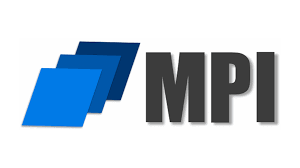Employment Requirements: Kinds and Illustrations
When it comes to finding the right candidate for a job, companies often look for individuals who meet specific criteria for the position. This is why job advertisements usually include a list of requirements that the chosen candidate should possess. Your resume and cover letter play a crucial role in showcasing your qualifications and skills, making it easier for companies to evaluate your suitability for the job. In this article, we will discuss the various types of qualifications, provide examples, and explore how you can leverage your experience to land a job based on skills rather than just credentials.
Types of Qualifications
Employers typically look for different types of qualifications, including soft and hard skills, tangible and intangible attributes, and transferable abilities. Each of these types of qualifications plays a crucial role in determining a candidate’s suitability for a job:
Tangible Qualifications
Tangible qualifications are those that can be seen and measured. Examples of tangible qualifications include certifications like first aid or CPR, as well as tangible results such as sales records or quotas achieved. Depending on the industry and the nature of the job, employers may emphasize certain tangible qualifications more than others. For example, safety certifications are usually non-negotiable in high-risk industries.
Intangible Qualifications
Intangible qualifications are characteristics that are harder to quantify but are equally important. These may include qualities like being driven, detail-oriented, or passionate. How you present your intangible qualifications can make a significant impact on how potential employers perceive you. For instance, highlighting your willingness to work overtime can demonstrate your motivation to hiring managers.
Soft Skills
Soft skills are traits that are easier to define but can be challenging to evaluate. These skills involve communication, creativity, and interpersonal abilities. Examples of soft skills include active listening and conflict resolution, which are valuable in various roles that involve client interactions and team collaboration.
Hard Skills
Hard skills are abilities that are typically acquired through training and are often job-specific. Examples of hard skills include proficiency in a programming language or operating a particular piece of equipment. Strong technical skills and knowledge in a specific field can make you a competitive candidate for a job, as they can be valuable in tasks that require specialized expertise.
Transferable Skills
Transferable skills are those that can be applied across different contexts, settings, or industries. Soft skills, in particular, are known for being highly transferable. For example, skills like problem-solving and communication can be valuable in a wide range of roles, from retail sales to management. Even certain hard skills, such as first aid or CPR training, can be transferable and sought after in various job settings.
Examples of Job Requirements
When applying for a job, it’s essential to align your qualifications with the job description. For instance, if you are applying for a front desk position that requires customer service skills, you may want to emphasize your interpersonal abilities, organization, and empathy. Here are some examples of soft and hard skill qualifications:
Soft Skills
– Empathy
– Organization
– Customer Service
– Attention to Detail
– Patience
– Adaptability
– Determination
Hard Skills
– Computer Programming
– Project Management
– Medical Skills
– Teaching Skills
– Sales Skills
– Social Media Management
– Culinary Skills
– Customer Interaction Skills
– Precision in Detail
Drawing on Experience
In some cases, employers may consider relevant experience as a substitute for specific qualifications listed in a job advertisement. This is especially true for soft skills, which are highly sought after in many industries and can be transferable across different job roles. Employers may be willing to accept a combination of experience and skills as a substitute for certain credentials, such as years of experience or a specific degree. By emphasizing the talents associated with a desired qualification, you can make a compelling case for how your experience qualifies you for the job.
For example, suppose you are applying for a software development role that requires a bachelor’s degree in computer science. Even if you don’t have a bachelor’s degree, you can highlight your 15 years of experience in software development and expertise in the required programming language. Your cover letter can explain how your experience and skills can compensate for the educational requirement, while your resume can showcase your extensive experience in the field.
In conclusion, understanding the different types of qualifications that employers look for can help you tailor your job application to highlight your strengths effectively. By showcasing both your hard and soft skills, as well as your transferable abilities, you can demonstrate your suitability for a wide range of job roles. Leveraging your experience and emphasizing how it aligns with the job requirements can make you a compelling candidate for the position. Remember to customize your application materials to match the job description and showcase your qualifications in the best possible light.

